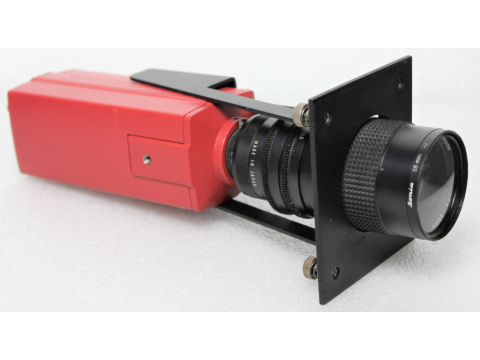Varifocal Surveillance Cameras: Types, Features, and Applications
Varifocal surveillance cameras stand out for their ability to adjust the lens's focal length, providing flexibility in zoom and field of view. This feature makes them ideal for a wide range of security applications, from monitoring small indoor areas to overseeing expansive outdoor spaces.
What Are Varifocal Cameras?
Varifocal cameras are equipped with lenses that allow manual or motorized adjustment of the focal length. This capability enables users to modify the field of view and level of detail captured by the camera, eliminating the need to replace lenses for different monitoring scenarios.
These cameras are available in various formats, including:
- Analog Cameras
- IP (Network) Cameras
- Dome Cameras
- PTZ (Pan-Tilt-Zoom) Cameras
Types of Varifocal Cameras
1. Manual Adjustment
- Use Case: Ideal for stationary installations where the field of view needs precise but infrequent adjustments.
- Examples: Indoor fixed cameras, basic outdoor monitoring setups.
2. Motorized Adjustment (Transfocators)
- Features: These cameras come with a motorized lens for remote zoom and focus control.
- Use Case: Suitable for scenarios requiring frequent adjustments, such as outdoor surveillance or areas with changing layouts.
Benefits of Varifocal Cameras
- Flexibility: Adjust the field of view without replacing the camera or lens.
- Precision: Focus on specific areas for better detail or cover a wider area as needed.
- Cost-Effective: A single camera can adapt to multiple security requirements, reducing the need for additional devices.
Varifocal Lenses in Analog and IP Cameras
Analog Cameras
- Compatibility: Often require a separate control line for lens adjustments.
- Technology Integration: Features like UTC-Control (Up The Coax) allow lens control via the coaxial cable in TVI, AHD, and CVI technologies.
- Use Case: Reliable choice for existing analog systems, particularly in small to medium setups.
IP Cameras
- Ease of Use: Support lens adjustment over a single Ethernet cable, simplifying installation and operation.
- Scalability: Ideal for integration into larger networked systems.
- Use Case: Preferred for modern installations, offering higher resolution and advanced features like remote access and analytics.
Specialized Varifocal Cameras
1. PTZ Cameras with Varifocal Lenses
- Features: Combine pan, tilt, and zoom functionalities with varifocal lenses.
- Applications: Monitoring large areas like parking lots, stadiums, or industrial sites.
- Control Options:
- Remote control via DVR or software.
- Integration with surveillance servers or PCs.
2. Outdoor Varifocal Cameras
- Design: Rugged housing with weatherproof (IP66 or higher) and vandal-resistant features.
- Applications: Perimeter security, entry-point monitoring, and dynamic outdoor environments.
How to Choose the Right Varifocal Camera
Determine the Use Case:
- Indoor: Choose compact, manual models with simple adjustment.
- Outdoor: Opt for motorized, weatherproof cameras for adaptability and durability.
Resolution Requirements:
- Go for HD or higher resolution (1080p to 4K) for detailed monitoring.
Lens Adjustment Method:
- Manual Adjustment: Cost-effective for fixed installations.
- Motorized Lenses: Convenient for dynamic monitoring needs.
Compatibility:
- Ensure compatibility with existing systems, especially for analog installations.
Budget Considerations:
- Balance features with cost; advanced PTZ models may be unnecessary for small-scale applications.
Conclusion
Varifocal surveillance cameras provide unmatched flexibility and precision in security monitoring. Their ability to adapt to changing needs makes them invaluable for both small-scale setups and complex security systems.
Whether you need reliable indoor monitoring or robust outdoor coverage, varifocal cameras offer a versatile solution tailored to your specific requirements.

